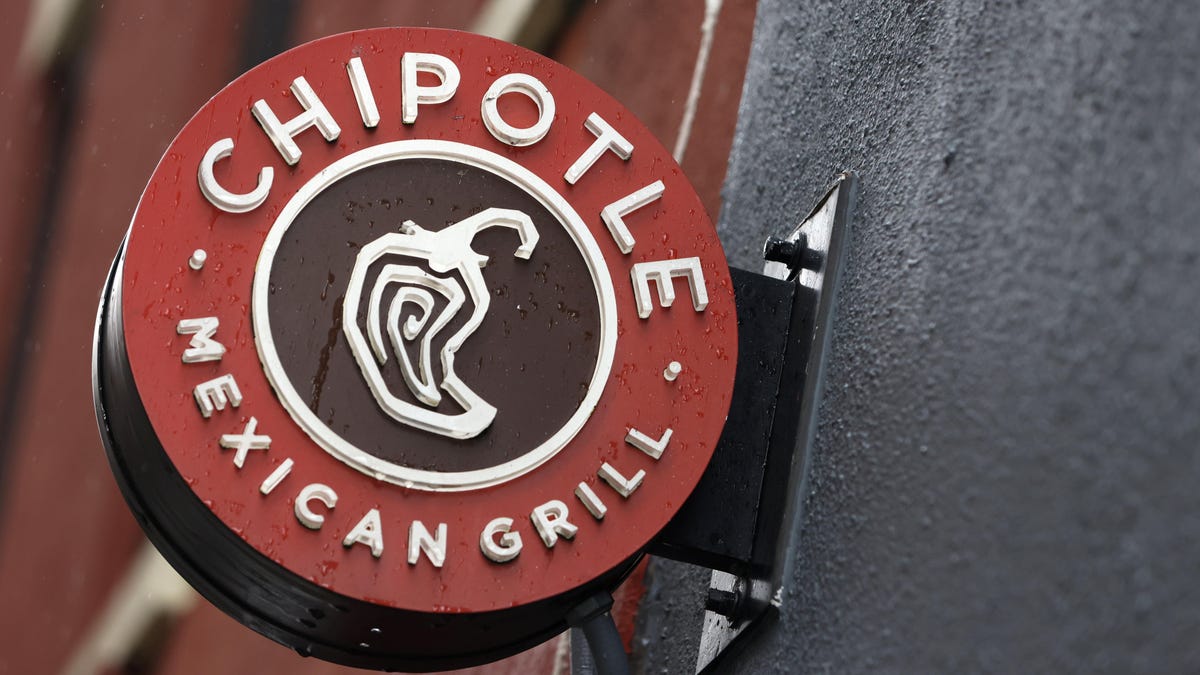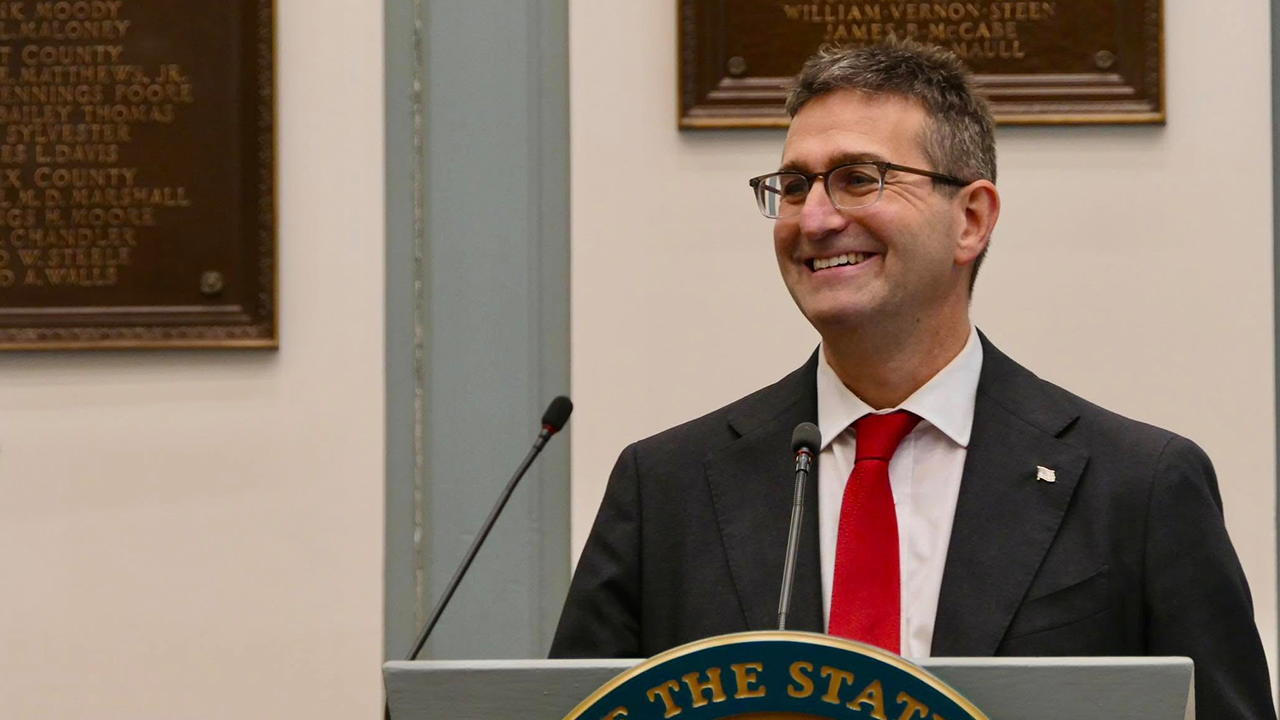California
Chipotle will pass the California minimum wage hike on to customers

Chipotle has tweaked its menu prices for food inflation—but it still needs to revise it for rising labor costs.
Last week, Chipotle’s menu boards started showing slightly higher prices. At one Brooklyn eatery, a $10.95 chicken burrito bowl’s price suddenly cost $11.35—without extra guac, cheese, or anything. The Mexican grill chain also hiked prices for soft drinks, as Reddit users pointed out. But this hike “does not consider any part of the California wages that’ll happen next year,” chief financial officer Jack Hartung said during the company’s third-quarter earnings call on Oct. 26.
Starting in April 2024, fast food workers employed at quick-serve restaurants that have 60 locations or more in California will be eligible for a minimum wage of $20 per hour, up from the current $15.50. For Chipotle, the jump will be a little less jarring considering it already pays $17 as starting wage in the state. But the effect won’t be insignificant.
Around 15% of Chipotle’s 3,300 stores are located in California. The minimum wage increase will add between 2.5% and 3% to the company’s overall labor costs.
While Chipotle hasn’t disclosed the exact level of pricing to combat this cost pressure, it’s sure that it won’t absorb it all. For customers, “it’s going to be a mid- to high-single-digit price increase, but we are definitely going to pass this on,” the CFO said.
A brief roundup of Chipotle’s four price increases in two years
Worker pay triggered menu pricing changes in October 2021 as well. Back then, it attributed a 4% hike in menu prices to hourly wages for employees rising to $15 an hour.
Between then and now, the company has raised prices three more times, including earlier this month, citing inflation and rising ingredient costs. However, it claims that the benefit from last year’s menu price increases was “mostly offset by inflation across several food costs,” including beef, cheese, and avocado, as well as high gas prices.
Chipotle’s financial results, by the digits
11%: Year-on-year increase in sales, to reach $2.5 billion
37%: Digital sales made via the Chipotle website, Chipotle app or third-party delivery aggregators
285-315: Stores Chipotle expects to open in 2024, with 80% of them having digital order drive-thru pickup lane “Chipotlanes”
114,000: Total number of Chipotle employees
3%: Chipotle’s price increase earlier this month
Quotable: Demand for Chipotle’s holds strong
“The consumer is clearly under pressure with inflation over the past year and pretty much everything with gas and groceries and really across the board higher interest rates. We continue to do well not just across our income levels, but with the lower income. They’re holding up really well. They’re really hanging in there at about the same level as our medium and high income levels.”
—CFO Jack Hartung on the Oct. 26 earnings call
One more thing: Chipotle isn’t worried about Ozempic or Wegovy
The rising popularity of weight-management drugs like Ozempic and WeGovy has dimmed the outlook for several food companies—especially fast- and junk-food. Walmart, far instance, warned of a slight pullback in sales as baskets evolved. Packaged food giant Conagra said it’ll consider changing portion sizes if the obesity drugs have an impact. PepsiCo and Coca-Cola have downplayed the threat, but they do have plenty of low-cal options on offer.
Industry watchers are encouraging fast-food chains like Domino’s Pizza, McDonald’s, KFC, and Krispy Kreme to rethink their menu offerings, tilting toward a healthier palate. Chipotle, which claims to have seen no material impact from the drugs yet, says its food already complements weight-loss goals.
“Our food is a good solution. Because it’s clean, it’s not fried,” CEO Brian Niccols said on the earnings call. “It allows people then to customize a meal that would fit their diet that they’re trying to achieve, whether they’re on GLP-1 drugs or whether they’re on a keto diet, or a Whole30 diet, or insert the lifestyle diet that they’re on, or the lifestyle drug that they might be on. The good news is we’re positioned to be able to customize that diet for you with clean food done in a very healthy way.”

California
18% of California student loans are delinquent

Despite the financial stress of Golden State life, Californians are relatively good at paying bills compared with the rest of the nation.
Take student loans. In the first quarter of 2025, 18% of California student loans were late.
That may seem like a stunningly high rate of skipped payments, but it’s the 10th lowest delinquency rate among the states and the District of Columbia. And across the nation, 23% of student loans were delinquent.
That’s what was found by my trusty spreadsheet’s review of bill-payment data from the Federal Reserve Bank of New York. The research, from 2003 to the first quarter of 2025, examines debt levels and payments drawn from individuals with credit histories.
The latest report was the first since student-loan repayment reprieves ended. That means late payments on many educational loans were once again being reported to credit bureaus. This provides a window into the scope of this education-linked financial challenge.
Student loans are roughly 5% of all California debts. These borrowings equal $4,660 per capita of the $87,620 total consumer borrowings statewide.
Nationally, it’s a bigger hurdle: student loans run $5,470 per capita – or 9% of Americans’ $62,490 per capita debts.
The ability to pay varies wildly. Mississippi was the worst at student-loan repayment, with 45% of these debts in arrears, followed by Alabama, Wisconsin, Kentucky, and Oklahoma, all at 34%.
The best at making payments lived in Illinois and Massachusetts, with 14% delinquency, followed by Connecticut, Virginia and New Hampshire were next at 15%.
Bigger picture
To start 2025, only 1.9% of all California consumer debts were 90 days or more past due.
Yes, skipped bills increased from 1.6% at year-end 2024. And it’s California’s highest level of tardy bills since the second quarter of 2020, when coronavirus lockdowns severely impacted the economy.
However, this level of delinquency is significantly lower than the 3.6% average lateness since 2003.
Nationally, 2.9% of bills were late in the first quarter, up from 1.9% at year’s end. Like California, the rate is still historically low. American tardiness has averaged 3.8% during the last 22 years.
California’s economy also has its challenges. Job creation has slowed to a crawl. The state remains unaffordable for the masses. The Trump administration’s “America First” thinking collides with California’s globally oriented business climate. Consumer confidence is also down.
That monetary angst can be found in the slowdown in Californians taking on new debts.
In the first quarter, total borrowings increased at an annual rate of only 0.8%. That’s well below the 3.3% growth pace since 2003.
It’s a similar picture across the nation. Borrowings are up 1% in a year vs. a 3.3% average growth.
Home sweet home
The New York Fed tells us Californians are getting better with home loans, which are 81% of all consumer debts statewide.
Just 0.56% of mortgage balances were 90 days or more late to start 2025. That’s down from 0.58% at year’s end. Although we’ll note that the late mortgage level in the fourth quarter of 2024 was the highest since the second quarter of 2020.
And lateness is historically low – below the average 2.8% late home loans since 2003.
Equally noteworthy is that California’s improvement rate comes as more Americans fail to make timely payments on mortgages, which are 70% of all U.S. consumer debts.
In the first quarter, 0.9% of U.S. home loans were late – the worst payment pace in five years. That’s up from 0.6% at year’s end, but this is still comfortably below the 2.6% historical norm.
There is a rising level of deeply troubled homeowners.
California had 15 new foreclosures per 1,000 consumers in the first quarter. That’s the highest since the first quarter of 2020 and up from 12 at year’s end. But to be fair, it’s also nowhere near the 88 per 1,000 average since 2003.
Same story nationally with 21 U.S. foreclosure starts per 1,000 consumers – up from 14 at year’s end but off the 70 historic pace.
Jonathan Lansner is the business columnist for the Southern California News Group. He can be reached at jlansner@scng.com
California
This Northern California city is the top U.S. destination among homebuyers looking to relocate

A “For Sale” sign in front of a home in Sacramento, California, US, on Monday, July 3, 2023. The Mortgage Bankers Association is scheduled to release mortgage applications figures on July 6. Photographer: David Paul Morris/Bloomberg via Getty Images
SAN FRANCISCO – New figures show that nationwide, Sacramento was the most searched-for destination among homebuyers looking to relocate, while San Francisco was home to one of the top cities that homebuyers were looking to leave.
Migration trends identified by residential real estate brokerage Redfin also showed that California was the top state homebuyers searched to leave.
The top states people searched to relocate to included Florida, Arizona, and North Carolina.
The analysis covered the period from February to April of this year and was based on a sample of some 2 million Redfin users who searched for homes across more than 100 major U.S. metro areas, the company said. Those included in the dataset viewed at least 10 homes for sale in a three-month period.
Year-over-year declines
Redfin’s latest figures also show a year-over-year decline in home prices in six of the nine Bay Area counties.
By the numbers:
Alameda County saw the biggest drop of 4.3% with a median home price of $1,167,500.
Contra Costa County saw a similar decline at 4.2%, though its median home price was much lower at $829,000.
Solano (-1.6%), Napa (-1.1%), San Mateo (-0.89%), and Marin (-0.4%) counties also saw year-over-year declines, though there were large differences in their median prices.
Solano County had a median of $575,500.
Napa County’s median was $920,000.
San Mateo County had a median of $1,665,000.
Marin County’s median was $1,543,750.
Year-over-year increases
San Francisco saw the Bay Area’s biggest increase from a year ago at 3.9%, with a median of $1,455,000.
Santa Clara County’s increase was 3.6%. The county also had the highest median home price in the Bay Area at $1,750,000.
Compare that with Sonoma County, with the lowest median in the Bay Area of $828,353. The county saw an increase of 1.4% last month from a year ago.
Dig deeper:
Other notable findings showed that Sunnyvale was the city with the fastest growing sales price in all of California, with home prices up almost 30% compared to last year.
Sunnyvale’s median price was $2.3 million last month, according to Redfin.
Berkeley had the fourth-fastest sales growth, up almost 20%, putting the median at almost $1.6 million.
Danville also made the top 10 list of California metros that saw a jump in sales prices.
In seventh place, the Contra Costa County city had a 15% spike in the sale price compared to last year. It also saw a nearly 15% decline in the number of homes sold.
Danville’s median price was $2.3 million.
Bay Area cities identified as ‘most competitive’
The Bay Area took every slot in Redfin’s list of top 10 “most competitive” cities in the state.
SEE ALSO: Homebuyers need to make more than $400K in this Bay Area region to afford the ‘typical’ home, analysis finds
The real estate company compiled its list based on the most homes that received multiple offers, often with waived contingencies. Redfin then scored the cities on a 0 to 100 scale.
The metros deemed “most competitive” fell in the 90-100 range.
Top 10 Most Competitive Cities in California
1. Santa Clara
2. Sunnyvale
3. Alameda
4. Daly City
5. Livermore
6. Mountain View
7. Berkeley
8. Danville
9. Castro Valley
10. San Ramon
(Source: Redfin)

State Farm Insurance one step closer to raising rates
A court ruling on Tuesday clears the way for State Farm Insurance to move forward with significant rate increases for homeowners and renters. Homeowners would see an average 17% hike, while renters and condo owners would see prices increase an average of 15%. We spoke to industry expert Karl Susman for his analysis on the situation.
California
‘More than we can bear’: Missing California student found dead in Big Bear Lake

A Southern California college student who went missing in a popular mountain town over the weekend has been found dead in Big Bear Lake.
Tanner Prentiss, 22, was last seen on May 17 at around 12:30 a.m. in Big Bear Lake, California, according to the city’s sheriff station. Search crews located his body in the water Monday shortly before 10:30 a.m. near the city’s Pine Knot Marina.
CBS News reported that deputies searching the lake from a helicopter spotted Prentiss’ body, which was then recovered by a dive team. Deputies are investigating how Prentiss ended up in the water, the outlet reported.
No foul play is suspected and his cause of death is under investigation by the coroner’s office, the Big Bear Sheriff Station confirmed on Facebook.
The University of California at Santa Barbara student visited the lake with a group of friends, who reported him missing after he failed to return to their rental cabin, according to local stations KTLA and KABC.
“Our thoughts and prayers go out to Tanner’s family, friends and all those who are affected by his loss. The family is requesting privacy as they navigate through this tragic incident,” the sheriff station wrote.
‘This loss is more than we can bear’
Prentiss’ grandmother, Marilyn Taylor, wrote on Facebook that her family is devastated by Tanner’s passing and thanked everyone who supported their family during this time.
“Tanner was the funny guy, always smiling, tons of friends, charismatic, responsible and a really good person. This loss is more than we can bear at this time,” she wrote.
In a statement, UC Santa Barbara called Tanner’s death “heartbreaking” for the entire university community and expressed condolences to his friends and families.
“We understand the impact and stress surrounding this tragedy and are committed to supporting our campus community who may be impacted,” the school said in a statement shared with USA TODAY. “Our campus offers resources to students, staff, and faculty who are in need of support.”
-

 Technology1 week ago
Technology1 week agoMexico is suing Google over how it’s labeling the Gulf of Mexico
-

 Politics1 week ago
Politics1 week agoDHS says Massachusetts city council member 'incited chaos' as ICE arrested 'violent criminal alien'
-

 Education1 week ago
Education1 week agoA Professor’s Final Gift to Her Students: Her Life Savings
-

 Politics1 week ago
Politics1 week agoPresident Trump takes on 'Big Pharma' by signing executive order to lower drug prices
-

 Education1 week ago
Education1 week agoVideo: Tufts Student Speaks Publicly After Release From Immigration Detention
-

 News7 days ago
News7 days agoAs Harvard Battles Trump, Its President Will Take a 25% Pay Cut
-

 Culture1 week ago
Culture1 week agoTest Yourself on Memorable Lines From Popular Novels
-

 News1 week ago
News1 week agoWhy Trump Suddenly Declared Victory Over the Houthi Militia



















